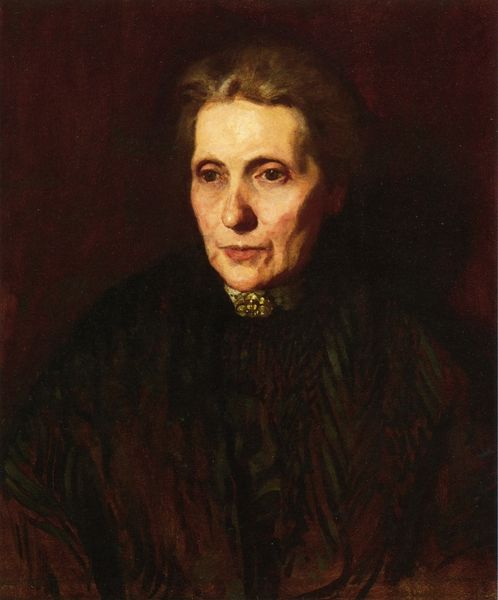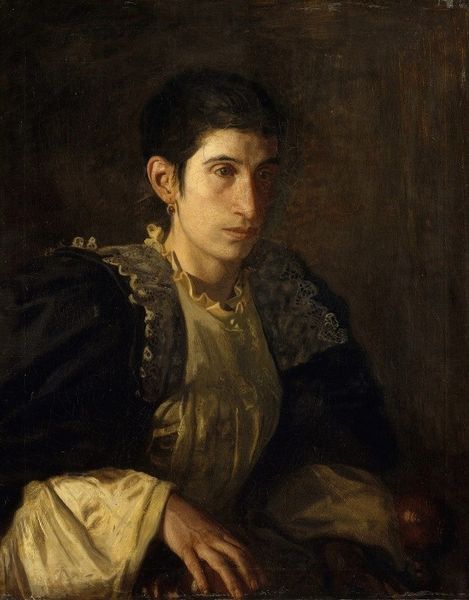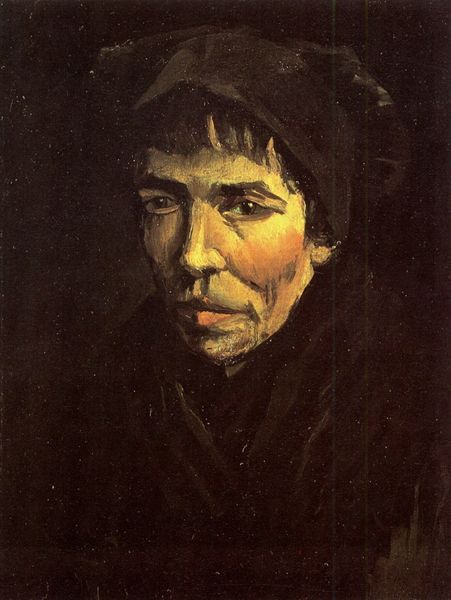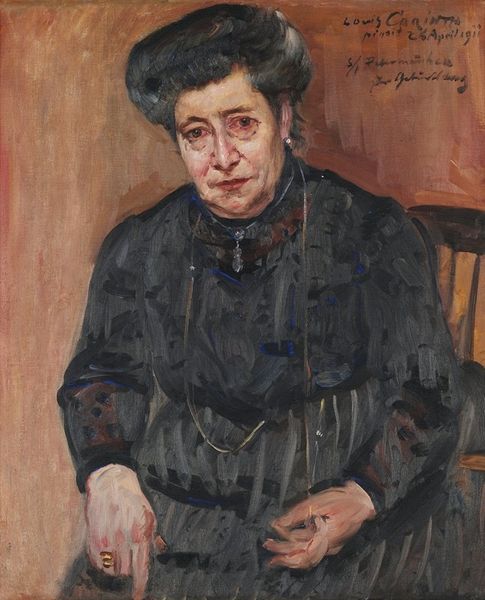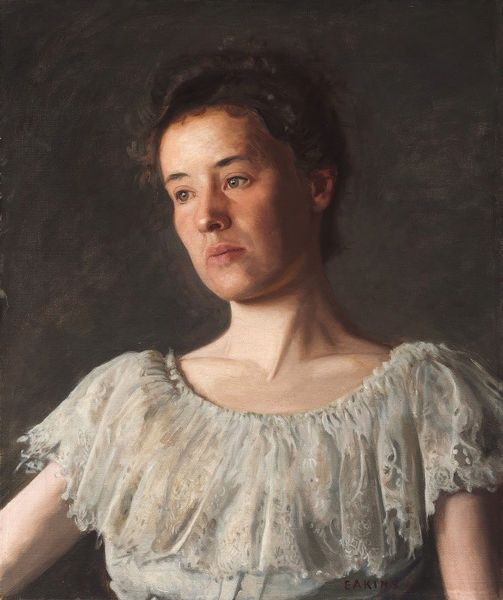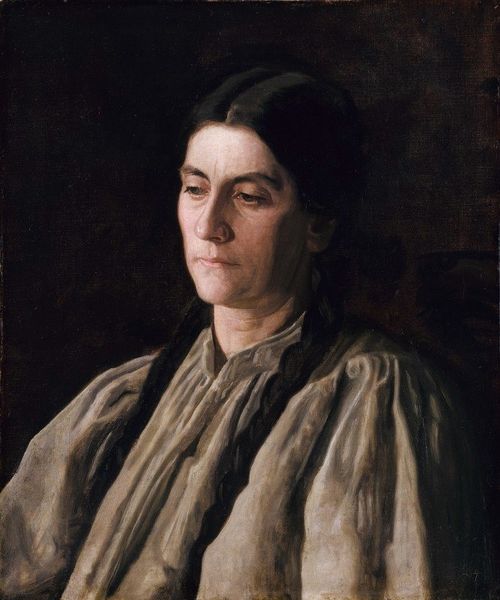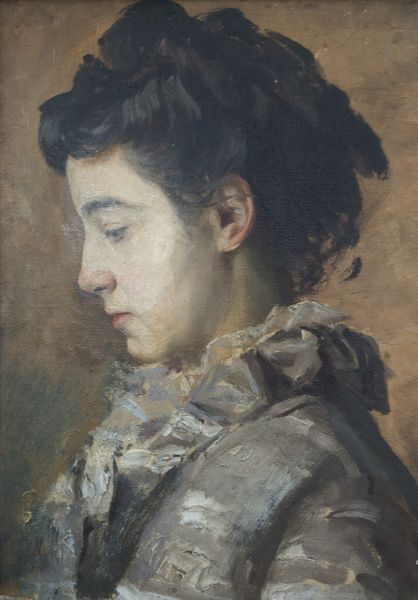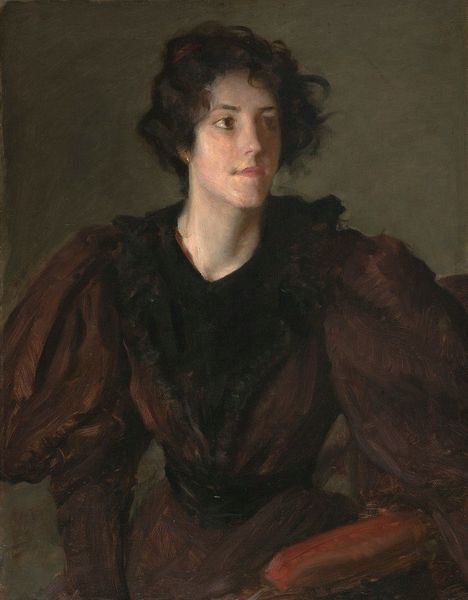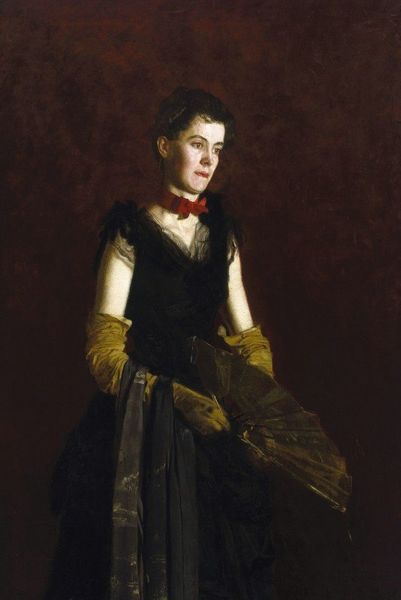
Portrait of Mary Adeline Williams 1900
0:00
0:00
thomaseakins
Philadelphia Museum of Art, Philadelphia, PA, US
Copyright: Public domain
Curator: Looking at Thomas Eakins’ 1900 oil painting, “Portrait of Mary Adeline Williams,” housed here at the Philadelphia Museum of Art, one is immediately struck by its somber tonality. What's your take on it? Editor: The first thing I notice is the textured materiality of that peculiar garment – is it fur, feathers, some kind of strange fabric? The visible brushstrokes almost fight against the realistic portrayal of the subject. It feels unresolved, intentionally so. Curator: Absolutely. Eakins was very interested in portraying his subjects as they truly were, eschewing idealization in favor of realism, sometimes even brutal honesty. Williams was a close acquaintance; their families socialized. Editor: This raises questions about the conditions of its making, the implied labor in realizing such details. I wonder about Williams' role in this transaction. Was she merely a passive sitter, or an active collaborator in this representation? Curator: That's a crucial question. Given the limited agency afforded to women during this period, and considering that it's an informal portrait commissioned between friends, I'm leaning toward Williams not holding any particular influence in determining Eakins’ process. There’s definitely a power dynamic at play, though not overt. Editor: Yet her gaze, turned slightly downward, hints at something unseen, or unacknowledged. She possesses some personal insight that's independent of the painter. Is that an element of resistance against objectification? Or perhaps, an affirmation of privacy within public representation? Curator: That's a persuasive reading. And certainly aligns with what we know about the reception of Eakins’ works during his lifetime—often controversial for his unconventional approaches. This tension contributes to a portrait that transcends simple likeness. Editor: It's a fascinating work when we acknowledge the active labor and materials in service of representation – both Eakins' meticulous hand, and Williams’ very presence – to understand their impact within social frameworks. Curator: Indeed, "Portrait of Mary Adeline Williams" allows us to consider how individuals were presented, perceived, and understood during the turn of the 20th century. A very intimate, insightful piece that resonates across history. Editor: A poignant example of how close attention to technique and texture reveals stories woven into the very fabric – or feathers, perhaps? – of a portrait.
Comments
No comments
Be the first to comment and join the conversation on the ultimate creative platform.

